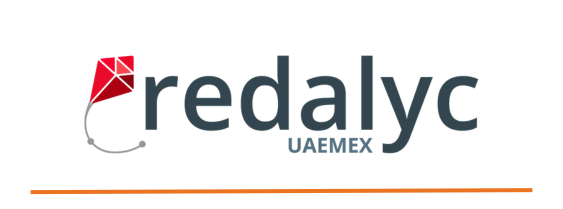A A systematic literature review of traffic control system implementations
DOI:
https://doi.org/10.26439/interfases2024.n19.6779Keywords:
traffic control, methods, algorithms, models, YOLO, implementationsAbstract
Traffic congestion frequently occurs in highly populated cities and can result from poor civil planning or inadequate public transportation. This issue increases traffic accidents, air pollution, fuel loss, and public dissatisfaction. Therefore, implementing traffic control systems that improve traffic flow and reduce travel times becomes essential. This work conducts a systematic literature review to identify the most efficient methods, algorithms, and models for developing traffic control systems. The review identifies three methods and three algorithms that are highly efficient for these systems, highlighting Bayesian filters and convolutional neural networks. It also shows that You Only Look Once (YOLO) is the most efficient image processing model for these implementations.
Downloads
References
Abbas, J., Zhang, Q., Hussain, I., Akram, S., Afaq, A., & Shad, M. A. (2020). Sustainable innovation in small medium enterprises: the impact of knowledge management on organizational innovation through a mediation analysis by using SEM approach. Sustainability, 12(6), 2407. https://doi.org/10.3390/su12062407.
Adams, G. L., & Lamont, B. T. (2003). Knowledge management systems and developing sustainable competitive advantage. Journal of Knowledge Management, 7(2), 142-154. https://doi.org/10.1108/13673270310477342
Alasoini, T., Heikkilä, A., Ramstad, E., & Ylöstalo, P. (2007). Consultation as a new way to collect information in the Tykes Program: Preliminary Results. Workpolitical Journal, 2(2007), 55-71.
Bardin, L. (1977). L’analyse de contenu (Vol. 69). Presses universitaires de France.
Barbieri, J. C., & Álvares, A. C. T. (2003). Inovações nas organizações empresariais. Em Organizações inovadoras: estudos e casos brasileiros (pp. 41-63). Fundação Getulio Vargas.
Braun, V., & Clarke, V. (2012). Thematic analysis. Em. H. Cooper, P. M. Camic, D. L. Long, A. T. Panter, D. Rindskopf & K. J. Sher (Eds.), APA handbook of research methods in psychology, Vol. 2. Research designs: quantitative, qualitative, neuropsychological, and biological (pp. 57-71). American Psychological Association. https://doi.org/10.1037/13620-004
Brown, J. S. (1999). Sustaining the ecology of knowledge. Leader to Leader, 12, 31-36.
Cervo, A. L., & Bervian, P. A. (2002). Metodologia científica (5ª ed.). Prentice Hall.
Costa, J., Pádua, M., & Moreira, A. C. (2023). Leadership styles and innovation management: What is the role of human capital? Administrative Sciences, 13(2), 47. https://doi.org/10.3390/admsci13020047
Creswell, J. W., & Creswell, J. D. (2018). Research design: qualitative, quantitative, and mixed methods approaches (5ª ed.). Sage.
Damanpour, F., & Aravind, D. (2012). Managerial innovation: Conceptions, processes and antecedents. Management and Organization Review, 8(2), 423-454. https://doi.org/10.1111/J.1740-8784.2011.00233.X
Davenport, T. H., & Prusak, L. (1998). Working knowledge: How organizations manage what they know. Harvard Business Press.
Easterby-Smith, M., & Lyles, M. (2003). Re-reading organizational learning: Selective memory, forgetting, and adaptation. Academy of Management Perspectives, 17(2), 51-55. https://doi.org/10.5465/ame.2003.10025192
Fioravanti, V. L. S., Stocker, F., & Macau, F. (2023). Knowledge transfer in technological innovation clusters. Innovation & Management Review, 20(1), 43-59. https://doi.org/10.1108/INMR-12-2020-0176
Fitriati, T. K., Purwana, D., & Buchdadi, A. D. (2020). Dynamic capabilities and SMEs performance: The mediating effect of innovation (Study of SMEs in Indonesia). Em 1st International Conference on Science, Health, Economics, Education and Technology (pp. 457-464). Atlantis Press.
Gil, A. C. (1991). Como elaborar projetos de pesquisa. Editora Atlas SA.
Gressler, L. A. (2003). Introdução à pesquisa: projetos e relatórios. Edições Loyola
Gemünden, H. G., Salomo, S., & Hölzle, K. (2007). Role models for radical innovations in times of open innovation. Creativity and Innovation Management, 16(4), 408-421. https://doi.org/10.1111/j.1467-8691.2007.00451.x
Harrison, N., & Samson, D. (2002). Technology management: Text and international cases. McGraw Hill.
Jha, P., & Karn, B. (2019). Knowledge managements’ relevance in supply chain management process of Indian e-commerce companies. International Journal of Recent Technology and Engineering, 8(3), 1797-1805.
Jennex, M. E., & Zyngier, S. (2007). Security as a contributor to knowledge management success. Information Systems Frontiers, 9, 493-504. https://doi.org.10.35940/ijrte.C4612.098319
King, W. R. (2007). A research agenda for the relationships between culture and knowledge management. Knowledge and Process Management, 14(3), 226-236. https://doi.org/10.1002/kpm.281
Lakatos, E. M. & Marconi, M. A. (2006). Metodologia do trabalho científico: procedimentos básicos, pesquisa bibliográfica, projeto e relatório publicações e trabalhos científicos (5ª ed.). Atlas.
Lacombe, F., & Heilborn, G. (2005). Princípios e tendências. Editora Saraiva.
Linder, J. C., Jarvenpaa, S., & Davenport, T. H. (2003, July 15). Toward an innovation sourcing strategy. MIT Sloan Management Review. https://sloanreview.mit.edu/article/toward-an-innovation-sourcing-strategy/https://doi.org/10.5325/transportationj.56.4.0477
March, S. T., & Smith, G. F. (1995). Design and natural science research on information technology. Decision Support Systems, 15(4), 251-266. https://doi.org/10.1016/0167-9236(94)00041-2
Moraes, M. T. B. de, Malischeski, K., & Dandolini, G. A. (2023). Gestão do conhecimento e inovação organizacional: uma revisão integrativa. Perspectivas Em Gestão & Conhecimento, 13(esp), 146-161. https://periodicos.ufpb.br/ojs2/index.php/pgc/article/view/65569
Nonaka,I., & Takeuchi, H. (1997). Criação de conhecimento na empresa: como as empresas japonesas geram a dinâmica da inovação. Elsevier.
Polyakov, M., Khanin, I., Shevchenko, G., & Bilozubenko, V. (2023). Knowledge management in international companies: Specific features and information tools. Financial and Credit Activity: Problems of Theory and Practice, 3(50), 457-467. https://doi.org. https://doi.org/10.55643/fcaptp.3.50.2023.4061
Pompeo, D. A., Rossi, L. A., & Galvão, C. M. (2009). Revisão integrativa: etapa inicial do processo de validação de diagnóstico de enfermagem. Acta Paulista de Enfermagem, 22, 434-438. https://doi.org/10.1590/S0103-21002009000400014
Pontes, B. R. (2022). Planejamento, recrutamento e seleção de pessoal (Vol. 9). LTr Editora.
Quinn, J. B. (1992). Intelligent enterprise: a knowledge and service based paradigm for Industry. Simon and Schuster.
Raupp, F. M., & Beuren, I. M. (2006). Metodologia da pesquisa aplicável às ciências. Em: I. M. Beuren (Ed.), Como elaborar trabalhos monográficos em contabilidade: teoria e prática (pp. 76-97). Atlas
Senge, P. M. (2018). A quinta disciplina: a arte e prática da organização que aprende. Editora Best Seller.
Starkey, K. (1997). Como as organizações aprendem. Futura.
Sondhi, S.S., Salwan, P., Behl, A., Niranjan, S., & Hawkins, T. (2024). Evaluation of strategic orientation-led competitive advantage: the role of knowledge integration and service innovation. Journal of Knowledge Management, Vol. ahead-of-print No. ahead-of-print. https://doi.org/10.1108/JKM-07-2023-0660.
Takeuchi, H., & Nonaka, I. (2008). Criação e dialética do conhecimento. Em: Gestão do Conhecimento (pp. 17-38). Bookman
Tidd, J., & Thuriaux-Alemán, B. (2016). Innovation management practices: cross-sectorial adoption, variation, and effectiveness. R&D Management, 46(S3), 1024-1043.https://doi.org/10.1111/RADM.12199
Toffler, A. (1990). Powershift: Knowledge, wealth and violence at the edge of the 21st century. Bantam, London.
Valentim, M. L. P. (Org.) (2010). Gestão, mediação e uso da informação. Cultura Acadêmica
Venzin, M., Von Krogh, G., & Roos, J. (1998). Future research into knowledge management. Em: G. von Krogh, J. Roos & D. Kleine (Eds.), Knowing in firms: Understanding, managing and measuring knowledge (pp. 26-66). Sage. https://doi.org/10.4135/9781446280256
Wang, H. C., He, J., & Mahoney, J. T. (2009). Firm-specific knowledge resources and competitive advantage: the roles of economic-and relationship-based employee governance mechanisms. Strategic Management Journal, 30(12), 1265-1285. http://www.jstor.org/stable/27735491
Wang, C. L., & Ahmed, P. K. (2004). The development and validation of the organisational innovativeness construct using confirmatory factor analysis. European Journal of Innovation Management, 7(4), 303-313. https://doi.org/10.1108/14601060410565056
Whittemore, R., & Knafl, K. (2005). The integrative review: updated methodology. Journal of Advanced Nursing, 52(5), 546-553. https://doi.org/10.1111/j.1365-2648.2005.03621.x
Wiig, K. M. (1994). Knowledge management foundations: thinking about thinking-how people and organizations represent, create, and use knowledge. Schema Press.
Downloads
Published
Issue
Section
License
Authors who publish with this journal agree to the following terms:
Authors retain copyright and grant the journal right of first publication with the work simultaneously licensed under an Attribution 4.0 International (CC BY 4.0) License. that allows others to share the work with an acknowledgement of the work's authorship and initial publication in this journal.
Authors are able to enter into separate, additional contractual arrangements for the non-exclusive distribution of the journal's published version of the work (e.g., post it to an institutional repository or publish it in a book), with an acknowledgement of its initial publication in this journal.
Authors are permitted and encouraged to post their work online (e.g., in institutional repositories or on their website) prior to and during the submission process, as it can lead to productive exchanges, as well as earlier and greater citation of published work (See The Effect of Open Access).
Last updated 03/05/21






